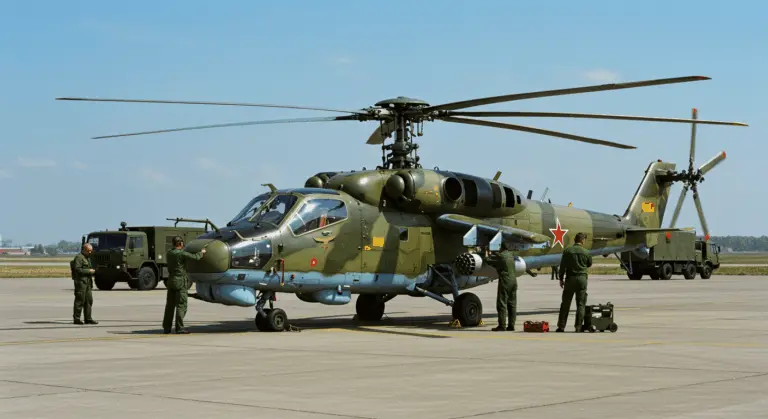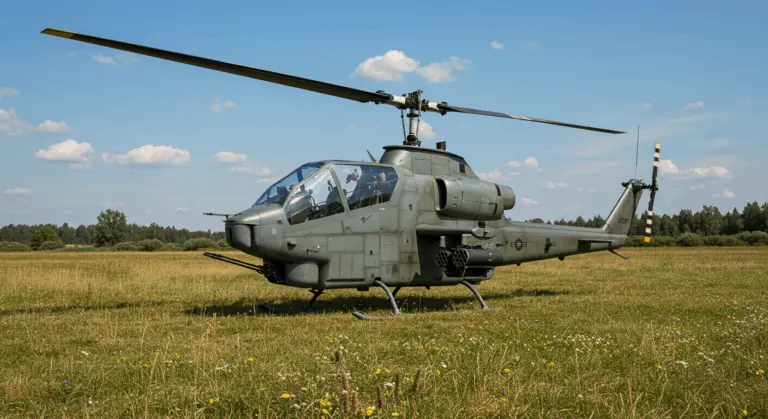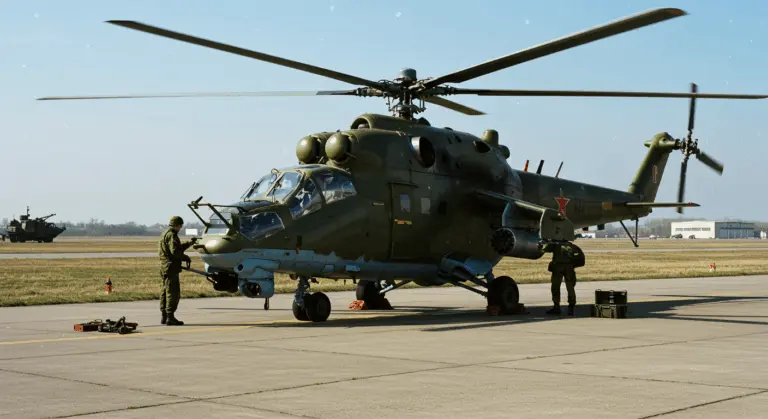Overview of the CH-47 Chinook Helicopter
The Boeing CH-47 Chinook is a tandem-rotor, heavy-lift helicopter that dominates military aviation. Originally conceived by Vector and now crafted by Boeing, this aircraft remains one of the most capable heavy-lift platforms in Western aviation.
History of the CH-47 Chinook
The CH-47 Chinook’s origins trace back to the late 1950s, when the U.S. Army required a versatile, heavy-lift helicopter to replace its aging piston-engine fleet.
The inaugural CH-47A rolled into U.S. Army service in 1962, quickly proving its value in military aviation. Its ability to transport heavy loads, vehicles, artillery, and troops in various environmental conditions made it an immediate operational success. The Chinook entered service just as America’s deepening Southeast Asian commitments—where the aircraft would prove its worth under fire.
Vietnam War Contributions
Throughout the Vietnam conflict, the CH-47 Chinook became essential for military logistics and tactical operations.
During the harrowing siege of The San, where Chinooks maintained critical supply lines to embattled U.S. forces.
Vietnam tested the Chinook extensively, developing operational methods and tactical innovations still influencing heavy-lift helicopter operations today. Its performance under extreme conditions cemented its reputation for reliability and versatility in combat.
Modern Conflicts and Humanitarian Missions
In recent decades, the CH-47 Chinook has proven its continued importance across modern battlefields.
Beyond military operations, CH-47s have played crucial humanitarian roles, responding to catastrophic natural disasters across the globe—from Hurricane Katrina’s devastation in the United States to devastating earthquakes in Haiti and Pakistan.
Specifications of the CH-47 Chinook
The CH-47 Chinook has evolved significantly through numerous variants since its debut, with each iteration improving the aircraft’s performance.
The helicopter’s signature tandem-rotor configuration eliminates tail rotor requirements entirely, directing all engine power to pure lift and forward thrust. This configuration also provides exceptional stability in crosswinds and enables the Chinook to perform precise hovering maneuvers despite its substantial size. The large cargo bay can carry entire vehicles, massive artillery pieces, or accommodate up to 55 fully-equipped troops—depending on mission configuration.
Performance and Capabilities
The contemporary CH-47F, driven by twin Honeywell T55-GA-714A turboshaft power plants, reaches a maximum speed of 170 knots (200 mph).
The Chinook can lift over 10,000 kg (22,000 pounds) for both internal and external loads—lifting vehicles and artillery pieces that other helicopters cannot handle. Remarkably, it maintains this lifting prowess even at high altitudes where competing helicopters struggle with reduced performance.
The tandem-rotor architecture provides key advantages: excellent stability in strong crosswinds and exceptional capability for managing asymmetric loads. Modern Chinooks also feature advanced systems that extend their operational capabilities, such as:
-
Digital cockpits and enhanced navigation systems.
-
Advanced defensive countermeasures.
-
All-weather, day/night operational capability.
Variants of the CH-47 Chinook
The CH-47 has evolved through several major variants, each introducing significant improvements:
-
CH-47A: The original production model that established the basic configuration.
-
CH-47C: Featured increased power from upgraded engines.
-
CH-47D: A major modernization with fiberglass rotor blades, improved transmissions, and enhanced avionics that extended the helicopter’s service life.
The latest production model, the CH-47F, boasts a fully digital cockpit, reinforced structural components, and more potent engines providing significant performance improvements.
International operators have received customized variants tailored to their specific requirements. The United Kingdom operates the HC. Mk 2, HC. Mk 3, and HC. Mk 6 models with unique modifications, while Japan produces the CH-47J under license with adaptations for its defense forces. These diverse variants demonstrate the Chinook’s adaptability and continued relevance across different operational environments and mission requirements.
Special Operations Variants
The special operations variants of the CH-47 Chinook are highly specialized versions designed for the most challenging covert operations.
The evolution of dedicated special operations variants includes:
-
MH-47D: The first dedicated variant (introduced in the 1980s) with improved navigation and early terrain-following radar.
-
MH-47E: Incorporated significant avionics upgrades, including multimode radar and FLIR sensors for low-level flight in darkness or adverse weather.
-
MH-47G: The most capable current model, combining the CH-47F’s digital cockpit with aerial refueling, extended-range fuel tanks, and advanced defensive and communications systems.
These special operations Chinooks excel at long-range infiltration missions, often operating at very low altitudes to evade enemy detection.
Current Operators of the CH-47 Chinook
The CH-47 Chinook serves with many air forces worldwide, serving with distinction in armed forces spanning six continents. The United States Army is the largest operator, fielding several hundred Chinooks forming the core of American medium-lift helicopter capability. The U.S. is currently implementing an extensive modernization program to upgrade existing helicopters to the CH-47F Block II standard, ensuring the platform’s continued relevance for decades to come.
The Chinook is operated by numerous countries worldwide. Key operators include:
-
NATO Allies: United Kingdom, Italy, Spain, the Netherlands, Greece, Turkey, and Germany.
-
Asia-Pacific: Australia, Japan, India, and Singapore.
-
Middle East: Egypt, Saudi Arabia, the United Arab Emirates, and Morocco.
-
North America: Canada, in addition to the United States.
International operators routinely customize their Chinooks with nation-specific modifications, tailoring these versatile machines to meet unique operational demands and seamlessly integrate with existing military systems. Despite these customizations, the global Chinook fleet benefits from commonality in major components and systems, facilitating multinational operations and logistics support. The widespread international use demonstrates the Chinook’s combination of lifting capacity, operational range, and tactical flexibility.
Conclusion: The Legacy of the CH-47 Chinook
Across more than six decades of distinguished service, the CH-47 Chinook has built an impressive record, evolving from its Vietnam service into a vital modern aircraft.
Continuous technological improvements ensure its operational relevance well into the mid-21st century—demonstrating outstanding engineering. Its unmistakable silhouette has become synonymous with military aviation itself, Its operational success has influenced helicopter tactics globally, establishing it as one of aviation’s greatest successes.




